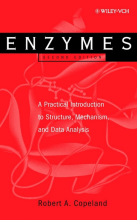Summary: Chemistry
- This + 400k other summaries
- A unique study and practice tool
- Never study anything twice again
- Get the grades you hope for
- 100% sure, 100% understanding
Read the summary and the most important questions on Chemistry
-
1 Chemistry behind colour changes
This is a preview. There are 1 more flashcards available for chapter 1
Show more cards here -
What is the colour of the pigments with the spectra above? an what pigments might these spectra represent?
First one is yellow/ orange. carotenoid
Second one is green. chlorophyll -
1.1 Caramelization
This is a preview. There are 8 more flashcards available for chapter 1.1
Show more cards here -
What is the difference in starting compounds of caramelization and the maillard reaction?
caramelsiation: reducing sugar
maillard reaction: amino compound -
When can you make caramel of sugar or sugar syrup?
You need:- persons of acid or alkaline catalysts
- low water activity
- high temperature
-
What are the different reactions happening in caramelization?
- Enolization
- Dehydration
- oxidation
- Fission
- Aldol concdensation
-
Why are there differences in caramelization temrpature?
these sugars consist out of pyranose and furanose ring sugars. Pyranose has one C more and therefore more stable. You need less energy to open the furnaces ring.
Also disacharides need more energy to open and therefore a higher temperature. -
Hoe does the enolization step in caramel go?
Dit is een acid catalysed reaction with mono schrods.
De dubble band verplaats van de O naar de 2e C.
Dit zorgt voor molecular diversity. -
What happens during the dehydration step?
A H is extracted from the molecule. and you get different round components. -
What is formed during the dehydration step?
Aroma compounds -
Which monosaccharides yield more products in dehydration, aldoses or ketoses?
Ketoses since the reaction can go 2 ways in the elongation reaction. Therefore you get a bigger variaty of products in the dehydration reaction. -
What happens in the oxidation reaction of caramelization?
The enodial formed with the elongation reaction is very reactive.
In an oxidation reaction the H of the two upper C goes of and a double C bond is formed.
- Higher grades + faster learning
- Never study anything twice
- 100% sure, 100% understanding
Topics related to Summary: Chemistry
-
Chemistry behind colour changes - Caramelization
-
Chemistry behind colour changes - Maillard reaction
-
Chemistry behind colour changes - Enzymatic browning
-
Chemistry behind colour changes - Co pigmentation
-
Chemistry behind colour changes - Colourants
-
Taste Sensations - Spice sensations
-
Taste Sensations - Cooling sensations
-
Taste Sensations - Tingling sensations




























